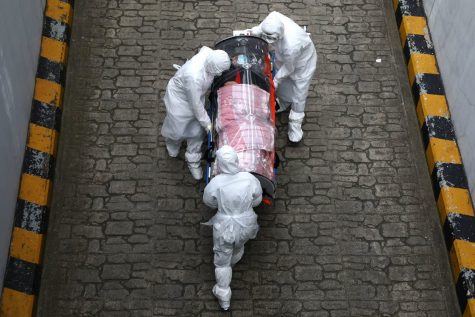How South Korea Defeated Corona
April 25, 2020
South Korea and the United States had its first Corona case confirmed on the same day: January 20, 2020. However, while South Korea reached an all-time low with an average of only 10 cases a day, the U.S still has almost 30,000 cases a day. Evidently, how South Korea responded to the pandemic was effective and flattened the curve on COVID-19 in only 20 days. Hence, South Korea has been highly praised for its success in rapidly bringing its coronavirus outbreak under control without implementing economically damaging lockdowns (like those in Europe and the United States) or China’s draconian restrictions on speech and movement.
South Korea has published a guide to tackle Corona effectively for the rest of the world to follow. In the guidebook, there are three important lessons for the rest of the Corona-infected countries. Lesson one highlights the importance of taking fast action before the situation turns into a crisis. The New York Times published an article describing South Korea’s fast intervention: “Just one week after the country’s first case was diagnosed in late January, government officials met with representatives from several medical companies. They urged the companies to begin immediately developing coronavirus test kits for mass production, promising emergency approval.” Lesson two states that massive widespread testing proves effective. South Korea has tested more people for the Coronavirus than any other country, allowing it to isolate and treat many people as soon after they are infected. To spare hospitals and clinics from being overwhelmed, South Korea’s officials opened 600 testing centers, 50 drive-through stations, and some walk-in centers all designed to screen as many and as quickly as possible. Lesson three was the success of Contact Tracing. Contact Tracing allows health workers to retrace the movements of an infected patient to find, test, and maybe isolate any person who may have had contact with the infected patient. This enables health workers to quickly identify networks of possible transmission, removing the virus out of society. Furthermore, when the coronavirus outbreak began to expand, tracking the patients became difficult, so officials began to rely on mass messaging. South Koreans’ cell phones vibrate with emergency alerts whenever new cases are discovered in their districts. Through early treatment, identification, and segregation, South Korea has kept hospitals safe from most severe patients. Thus, its case fatality rate is just over one percent, among the lowest in the world.
South Korea has set an international example from recovering the outbreak. It has even increased its economy through exporting testing kits to other countries in need or has sent supplies as humanitarian aid. The head of the World Health Organization, Tedros Adhanom Ghebreyesus, has hailed South Korea as demonstrating that containing the virus, while difficult, “can be done.” He urged countries to “apply the lessons learned in Korea and elsewhere.”


